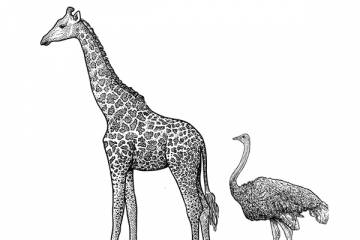- Name
- Jill Rosen
- jrosen@jhu.edu
- Office phone
- 443-997-9906
- Cell phone
- 443-547-8805
People born blind have never seen that bananas are yellow, but Johns Hopkins University researchers have found that like any sighted person, those born blind understand two bananas are likely to be the same color and why. Questioning the belief that dates back to philosopher John Locke that people born blind could never truly understand color, the team of cognitive neuroscientists demonstrated that congenitally blind and sighted individuals actually understand it quite similarly.
"A common intuition dating back to Locke is that a blind person could learn the arbitrary fact that marigolds are 'yellow' and tomatoes are 'red' but would still miss out on in-depth understanding of color," said senior author Marina Bedny. "The idea is that to really know something you have to see it for yourself, and without vision, you pick up shallow facts by talking to people. This study with blind people suggests the opposite. Talking to people conveys in-depth understanding of color better than arbitrary color facts."
The findings are published in Proceedings of the National Academy of Sciences.
In a two-phase experiment, blind and sighted adults were first asked the common color of objects (the arbitrary facts), why they were that color, and the likelihood that two of those objects selected at random would be the same color. The objects were a combination of natural things (fruits, plants, gems) and man-made ones (pen, dollar bill, stop sign).
Even though blind participants didn't always agree with sighted people about arbitrary color facts, say, that bananas were yellow, blind people's reasoning about why bananas are yellow and judgments about how likely two bananas are to be the same color (color consistency) were identical to sighted people, the team found. The result held across different types of objects, including those that are colored for specific reasons, like stop signs, coins, and even wedding dresses.
Blind and sighted individuals also displayed the same depth of understanding in explaining why objects had certain colors, said lead author Judy Kim, a former Johns Hopkins graduate student who is now a postdoctoral associate at Yale University.
The color of polar bears was one revealing example from the experiment. All sighted participants said they're white to blend in with the snow but quite a few blind participants said they're black to absorb heat and stay warm. "Blind individuals give a coherent explanation of a polar bear's color even when they don't agree with sighted people on the particular color of a polar bear," Kim said.
Next the team asked participants to make predictions about the colors of imaginary objects they'd never seen or heard of in a "explorer on an island" scenario. "We wanted to see how people reason about things they have never experienced," Kim said. "It's a great way to test the depth of people's color understanding."
The team told participants about items found on a remote island where the people have their own language, tools, machines, customs, etc., and the island ecology is unique. Participants heard about objects like "a green gem that is spiky, the size of a hand" and "a gadget that is triangular, yellow, and the size of a thumb," and then asked how likely another one of those would also be the same color.
Blind and sighted people made identical judgements about these novel objects, showing that their color knowledge generalizes to new examples and is not dependent on memorizing.
In a related recent study, the team similarly found that while blind people have not seen animal like elephants and lions, they make informed guesses about their appearance based on an understanding why animals look the way they do (e.g., mammals that live on land have legs).
Bedny would next like to determine how color knowledge is managed in the brain, and to work with blind children to try to learn how and when blind and sighted people acquire understanding of color.
"We hypothesize it's by casual learning through conversation and reading but when exactly does that happen?" she said. "Do blind and sighted children learn this information in the same way? Are there developmental differences where sighted children acquire the information at an earlier age, before they're using language and blind children acquire it only after they learned to talk and then catch up?"
Authors include former Johns Hopkins research assistant Brianna Aheimer, and Verónica Montané Manrara, a former Johns Hopkins student now in a graduate program at Northwestern University.
Posted in Science+Technology










